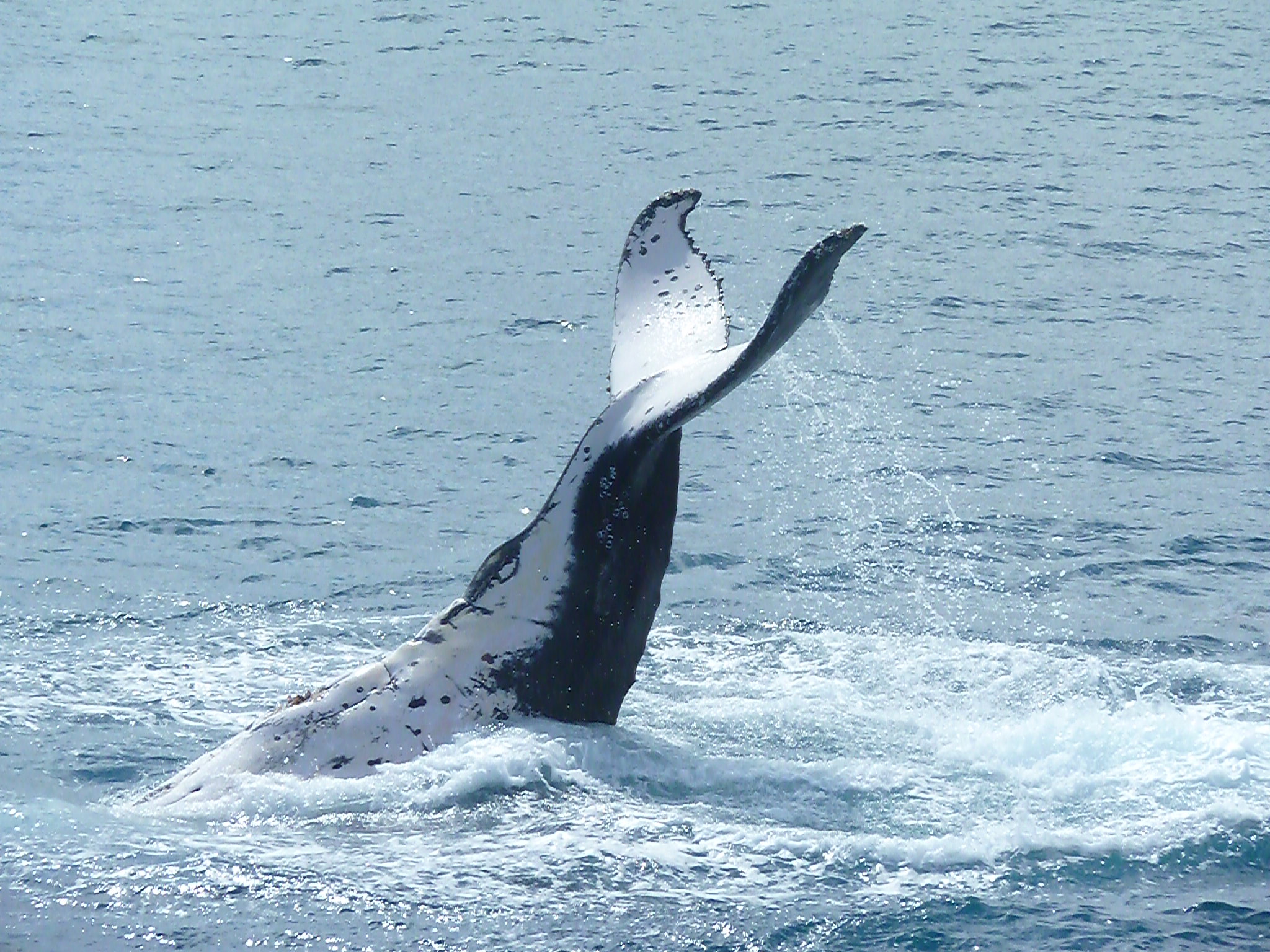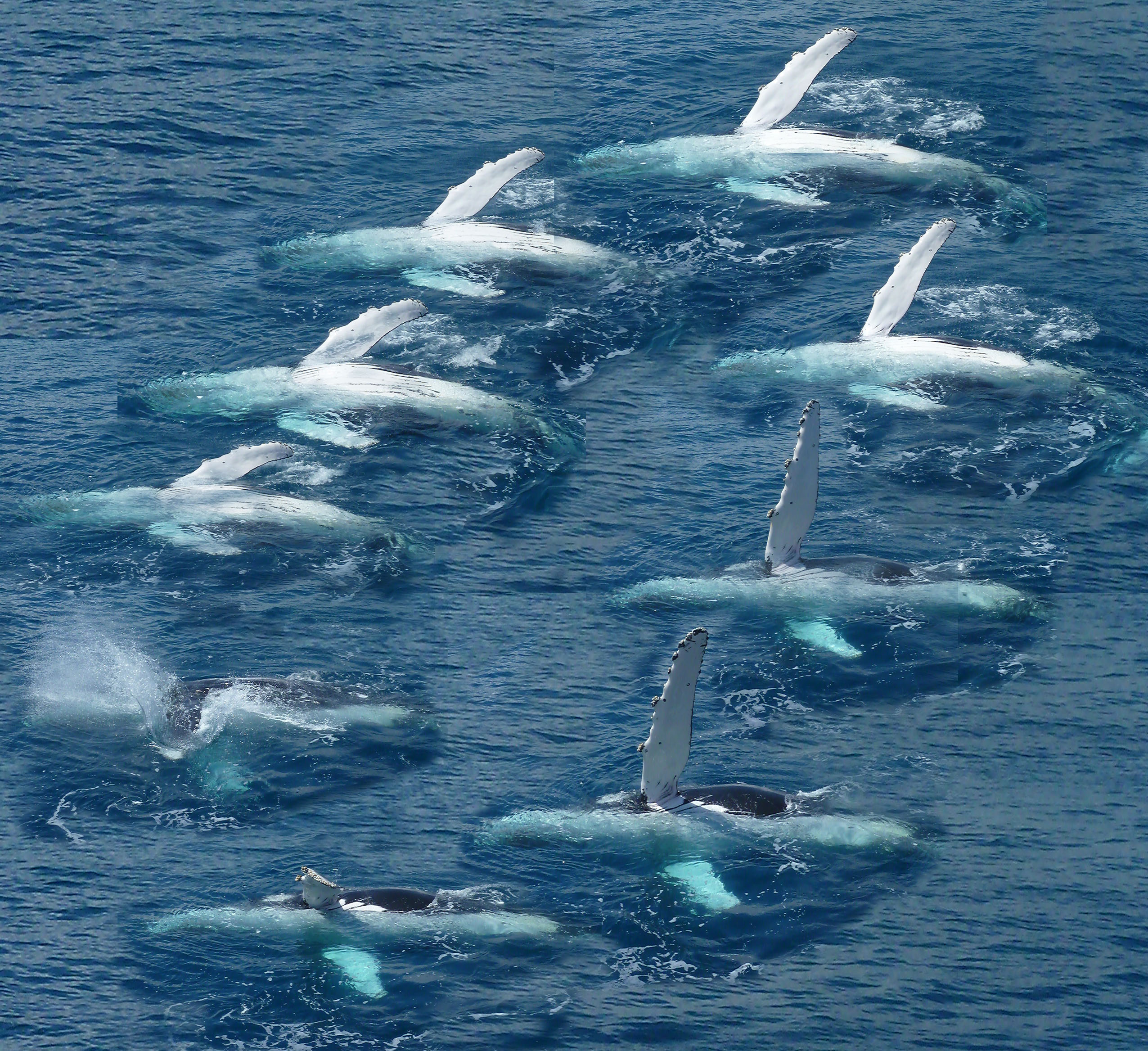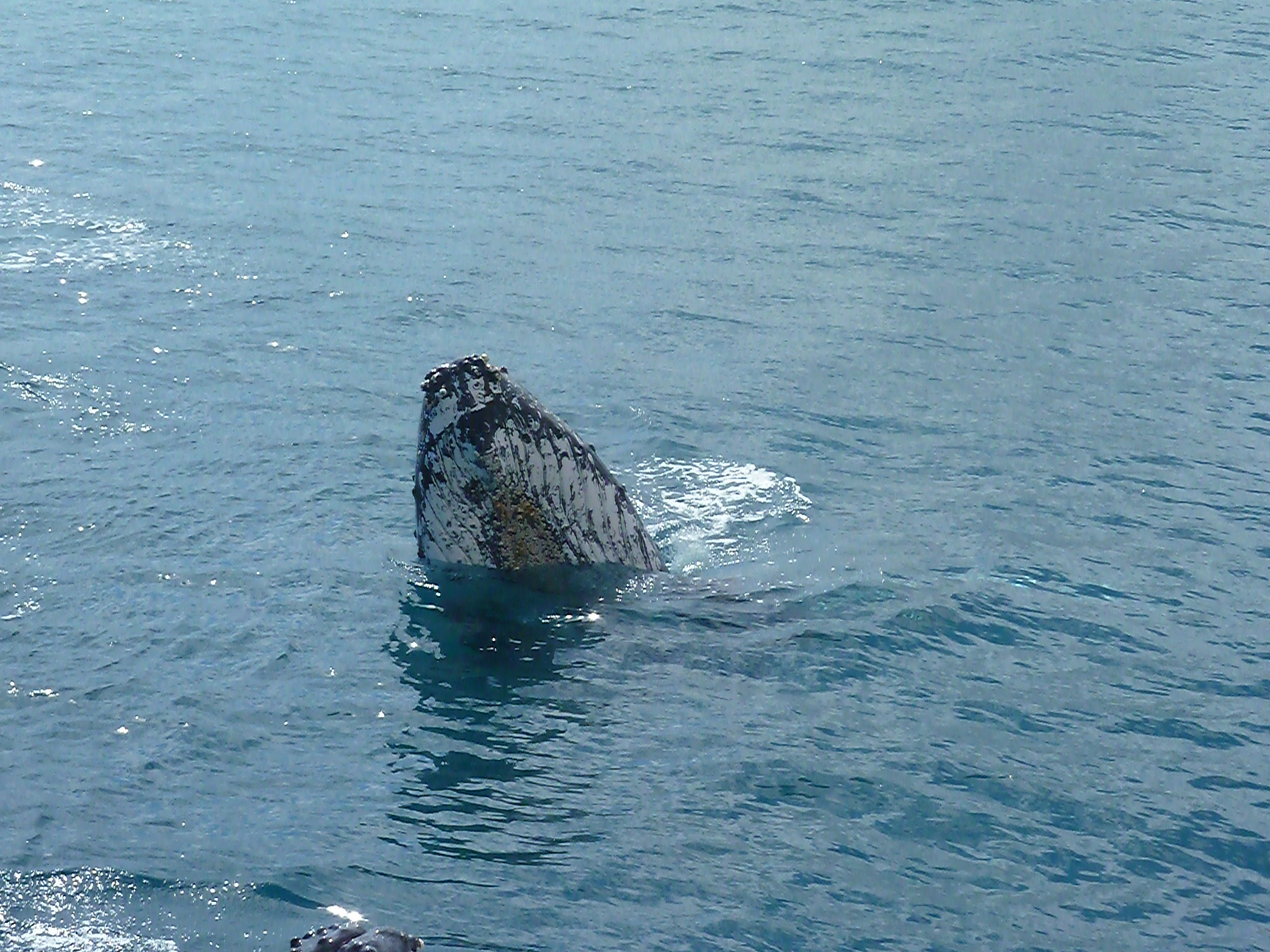

We have been trying to catch up with our friends, the Schock's (my diving mate during the years we lived in Tasmania) for a long time and finally we decided to travel to Hervey Bay where they normally migrate during the cold winters of Tasmania.
Hervey Bay is now a city north of Brisbane and an easy 3 hours drive by car. With Fraser Island (World Heritage) and Hervey Bay (the 'capital' for Whale Watching in Australia), it is not hard to see why we decided to extend our visits to the Schocks and include a whale watching trip. Based on descriptions made by our friends that made the trip, we had high expectations regarding this trip and it did not disappoint us. We had calm waters and blue skies in Platypus Bay and a large quantity of humpback whales made it an experience that we do not forget in a hurry.
We booked the trip with the Spirit of Hervey Bay, the largest of the wale watching boats in the area. We left the Whale Bay Marina (everything in Hervey Bay has "whale" in its name) at a very civilized 8:30 in the morning, after a "Big Breakfast" in a cosy Coffee Shop at the marina. Approximately 30 minutes after we left the marina, travelling along the sea-side coast of Fraser Island, we started seeing whales. I got so excited with the sightings that I shot 2297 photos. In the next two pages we included some photos to give you an idea of how much fun we had. If you want to see the route we took in more detail, click the map below to enlarge it.
If you do not have Whale Watching in your "bucket list" make sure you include it, because it is an unreal experience and Hervey Bay is probably the only place in the world where the whales stop their migration and enjoy interacting with the humans.
A bit of the history of Hervey Bay: pronounced Harvey Bay, and was originally founded by Captain James Cook in 1770. Captain Cook did not realize that Fraser Island was actually an island. With the Hervey Bay waters being shallow, he did not travel far enough South to realize that. The name Hervey Bay comes from Lord Augustus Hervey, Admiral of The Blue, the Earl of Bristol and Captain Cook's boss at the time (call it sucking to the Boss).
Since the mid 80's Hervey Bay can be reached by train also. One of the main activities in the area is the sugar industry with Hervey Bay, Maryborough and Bundaberg harvesting their own sugar cane. Through Bundaberg the region is also well know for its rum. In 1984, Hervey Bay became known as the 'City of Hervey Bay' with substantial growth not only in population, but also in business and tourism.
With fishing, Whale sightings and as well 120+ kilometers of unspoiled beaches on Fraser Island, Hervey Bay was bound to be the 'pot of gold' that Captain Cook discovered all those years ago.
The most common whales seen in Hervey Bay is the Humpback whale (Megaptera novoeangliae), named after their mega pectoral fins. It is the 5th largest whale. Adult females can grow up to 15 meters long but , shame on them, the males are smaller. The southern hemisphere humpbacks are black with white bellies. The pectoral fins have these ugly barnacles with hairs coming from the centre and believed to be sensors.
Each year during winter and spring, the whales migrate from Antarctica to the coastal waters of western and eastern Australia and South Pacific. When they reach the warm waters they mate and give birth. Approximately 7000 humpbacks travel the 6000 km from Antarctica to Australia's east coast and this number is estimated to have increased steadily by 10% each year. The whales start arriving in the southern part of the Great Barrier Reef in mid-June and in August they start returning to Antarctica. Most of the whales stop for a while in Hervey and Moreton Bays, making these places the ideal for whale watching.
During our trip, the many whales that we encountered appeared to be performing for us. They approached our boat and stayed for a long time demonstrating their usual behaviour's. The photo montage on the left shows a whale performing the "pectoral slap". Other behaviour's displayed by the whales during our trip and shown in the photos were: Spy Hop, Tail Slap, Blowing and Singing. One behaviour that we did not witnessed was the Breach, when the whale leaps out of the water and crashes spectacularly onto the surface.
The waters of Hervey Bay are also inhabited by Dugongs (sea cows), Dolphins, Turtles and obviously large sharks looking for a feed of a young whale.

Whales Tail slapping Behaviour

Whales Fin slapping Behaviour

Whales Spy Hopping Behaviour